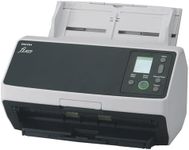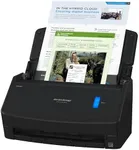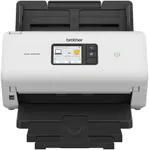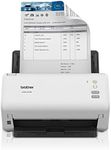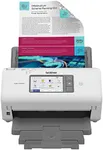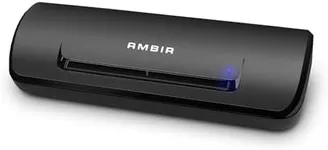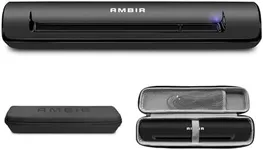Buying Guide for the Best High Volume Document Scanner
Choosing the right high-volume document scanner is crucial for businesses and individuals who need to digitize large amounts of paperwork efficiently. The right scanner can save time, improve productivity, and ensure that your digital documents are of high quality. When selecting a high-volume document scanner, consider the following key specifications to ensure you get the best fit for your needs.Scanning SpeedScanning speed is measured in pages per minute (PPM) or images per minute (IPM). This spec is important because it determines how quickly you can digitize your documents. If you have a large volume of documents to scan regularly, a higher PPM/IPM will save you significant time. Scanners with speeds of 30-50 PPM are suitable for moderate use, while those with speeds of 60-100+ PPM are ideal for heavy-duty, high-volume scanning needs. Consider your daily scanning volume to choose the right speed for you.
Document Feeder CapacityThe document feeder capacity indicates how many sheets the scanner can hold at once. This is important for uninterrupted scanning sessions, especially when dealing with large batches of documents. A feeder capacity of 50-100 sheets is adequate for moderate use, while capacities of 200-500+ sheets are better for high-volume scanning. If you frequently scan large stacks of documents, a higher feeder capacity will reduce the need for constant reloading.
Optical ResolutionOptical resolution, measured in dots per inch (DPI), determines the clarity and detail of the scanned images. Higher DPI values produce clearer and more detailed scans, which is important for documents with small text or intricate details. For general document scanning, 300 DPI is usually sufficient. For higher quality needs, such as scanning photos or detailed graphics, 600 DPI or higher may be necessary. Choose a resolution based on the type of documents you will be scanning most frequently.
Duplex ScanningDuplex scanning refers to the scanner's ability to scan both sides of a document simultaneously. This feature is important for efficiency, as it can significantly reduce the time needed to scan double-sided documents. If you often deal with double-sided paperwork, a scanner with duplex scanning capability will be highly beneficial. For single-sided documents, this feature may not be as critical.
Connectivity OptionsConnectivity options determine how the scanner connects to your computer or network. Common options include USB, Ethernet, and Wi-Fi. USB connections are straightforward and reliable for single-user setups. Ethernet and Wi-Fi are ideal for shared office environments, allowing multiple users to access the scanner. Consider your workspace setup and how many people will need to use the scanner to choose the best connectivity option.
Software and CompatibilityThe software that comes with the scanner and its compatibility with your operating system are crucial for a smooth scanning experience. Good software can enhance productivity with features like OCR (Optical Character Recognition), which converts scanned images into editable text. Ensure the scanner is compatible with your operating system (Windows, macOS, etc.) and that the included software meets your needs for document management and processing.
Durability and Duty CycleDurability and duty cycle refer to the scanner's ability to handle a certain volume of scans over a period of time, usually measured in scans per day or month. This is important for ensuring the scanner can keep up with your workload without frequent breakdowns. For moderate use, a duty cycle of up to 3,000 scans per day may be sufficient. For high-volume environments, look for scanners with duty cycles of 5,000-10,000+ scans per day. Assess your scanning needs to choose a scanner that can handle your expected volume.
